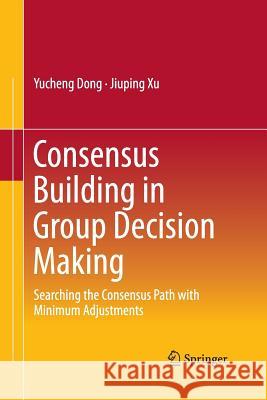Consensus Building in Group Decision Making: Searching the Consensus Path with Minimum Adjustments » książka
topmenu
Consensus Building in Group Decision Making: Searching the Consensus Path with Minimum Adjustments
ISBN-13: 9789811012839 / Angielski / Miękka / 2016 / 201 str.
Consensus Building in Group Decision Making: Searching the Consensus Path with Minimum Adjustments
ISBN-13: 9789811012839 / Angielski / Miękka / 2016 / 201 str.
cena 201,24
(netto: 191,66 VAT: 5%)
Najniższa cena z 30 dni: 192,74
(netto: 191,66 VAT: 5%)
Najniższa cena z 30 dni: 192,74
Termin realizacji zamówienia:
ok. 22 dni roboczych
Dostawa w 2026 r.
ok. 22 dni roboczych
Dostawa w 2026 r.
Darmowa dostawa!
Kategorie:
Kategorie BISAC:
Wydawca:
Springer
Język:
Angielski
ISBN-13:
9789811012839
Rok wydania:
2016
Wydanie:
Softcover Repri
Ilość stron:
201
Waga:
0.31 kg
Wymiary:
23.39 x 15.6 x 1.17
Oprawa:
Miękka
Wolumenów:
01
Dodatkowe informacje:
Wydanie ilustrowane











